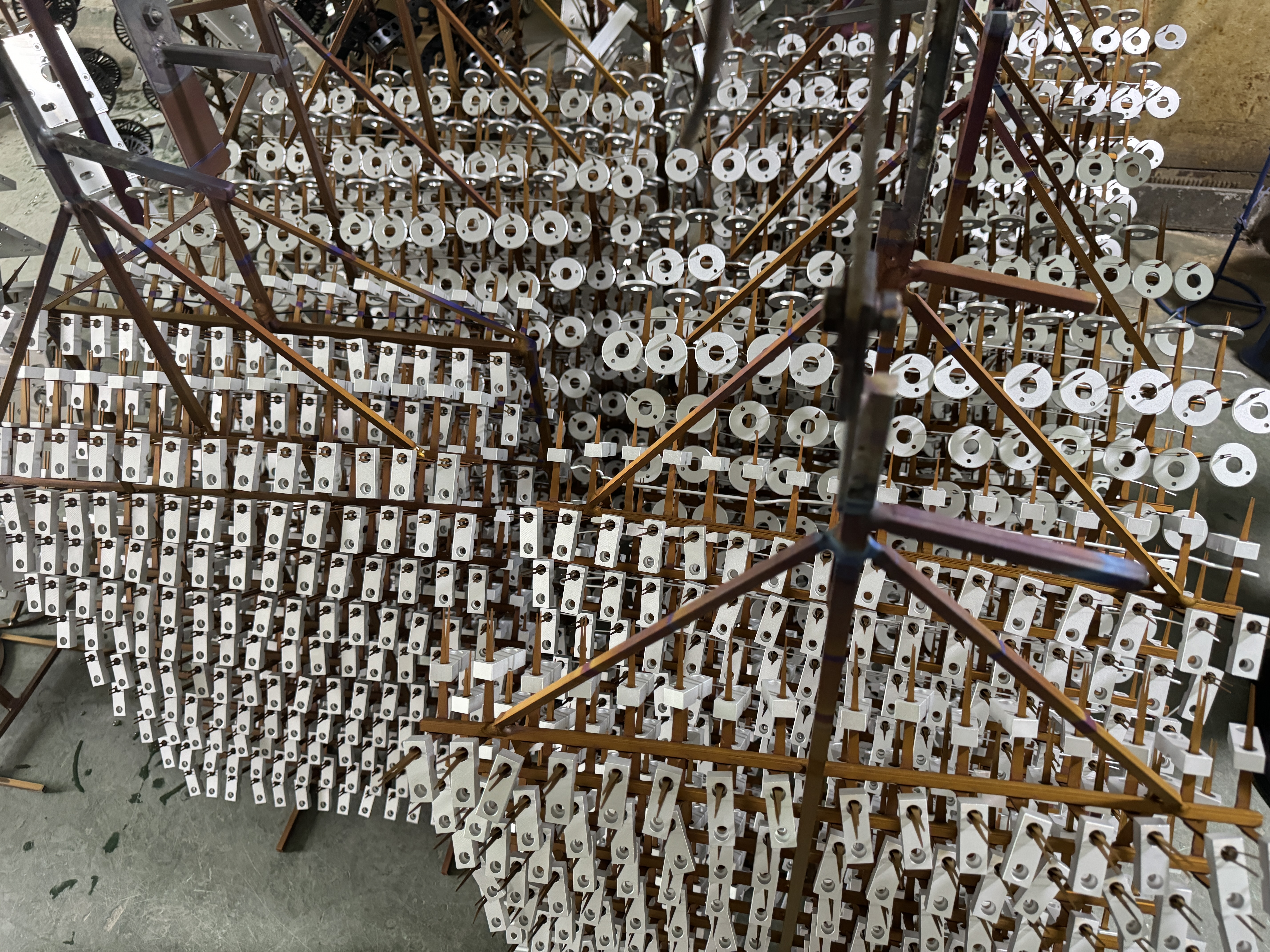Anodizing aluminum parts is a common surface treatment that enhances their corrosion resistance, durability, and aesthetics. In our sheet metal and CNC machining production practice, there are lots of aluminum parts need to be anodized, both aluminum sheet metal parts and aluminum CNC machined parts. And sometimes the customer requires the finished parts perfect without any defects. They can’t accept obviously visible contact points where with no anodizing coating.
However, during the aluminum anodizing process, contact points or areas where the part comes into direct contact with the hanging bracket or shelf cannot be effectively anodized due to lack of access to the anodizing solution. This limitation stems from the nature of the anodizing process and the need for unobstructed contact between the part and the anodizing solution to achieve a uniform and consistent anodized surface finish.
The anodizing process involves immersing aluminum parts in an electrolyte solution and passing an electric current through the solution, creating an oxide layer on the aluminum surface. This oxide layer provides the unique benefits of anodized aluminum, such as enhanced corrosion resistance, improved durability, and the ability to accept dye coloration.
However, when parts are anodized using a hanging bracket or rack, the contact points where the part comes into direct contact with the bracket are shielded from the anodizing solution. Therefore, these contact points do not undergo the same anodizing process as the rest of the part, resulting in hang spots or marks after anodization.
To solve this problem and minimize the visibility of the suspension points, careful consideration must be given to the design and placement of the suspension brackets as well as the finishing techniques after anodizing. Choosing suspension brackets with minimal surface area and strategic placement can help reduce the impact of contact points on the final appearance of the anodized part. In addition, post-anodization processes such as light sanding, polishing, or local anodizing modifications can be used to reduce the visibility of hanging points and achieve a more uniform anodized surface finish.
The reason why the contact points cannot be anodized during the aluminum anodizing process is due to the physical obstruction caused by the hanging bracket or shelf. By implementing thoughtful design and finishing strategies, manufacturers can minimize the impact of contact points on the overall quality and appearance of anodized aluminum parts.
The purpose of this article is to explore the selection of anodized suspension brackets, strategies to minimize hanging points, and techniques to ensure a perfect anodized surface.
Choose the right suspension bracket:
When choosing an anodized suspension bracket, it is important to consider the following factors:
1. Material Compatibility: Make sure the suspension bracket is made from a material that is compatible with the anodizing process, such as titanium or aluminum. This prevents any adverse reactions that may affect the quality of the anodized surface.
2. Design and Geometry: The design of the suspension bracket is chosen to minimize points of contact with the part to reduce the risk of leaving visible marks. Consider using brackets with smooth, rounded edges and minimal surface area to make contact with the part.
3. Heat resistance: Anodizing involves high temperatures, so the suspension bracket must be able to withstand the heat without warping or deforming.
Minimize hanging points:
To minimize the occurrence of hanging spots on anodized aluminum parts, the following techniques can be used:
1. Strategic Placement: Carefully place the suspension brackets on the part to ensure that any marks produced are in inconspicuous areas or can be easily hidden during subsequent assembly or finishing processes. And also need to be careful when taking the parts off the brackets to protect parts surface.
2. Masking: Use masking techniques to cover or protect critical surfaces or areas where hanging points may occur. This may involve using special tapes, plugs or coatings to protect specific areas from contact with the suspension bracket.
3. Surface Preparation: Before anodizing, consider applying a surface treatment or surface treatment to help hide or blend any remaining hanging points into the overall look of the part.
Ensure a perfect anodized finish:
After anodizing, the part must be inspected for any remaining suspension points and corrective action taken as necessary. This may involve post-processing techniques such as light sanding, polishing or local anodizing modifications to eliminate or minimize the visibility of any imperfections.
In summary, achieving a seamless anodized finish on aluminum parts with fixed brackets requires careful consideration of bracket selection, strategic placement, and post-anodization inspection and refinishing processes. By implementing these practices, manufacturers can minimize the presence of hanging points and ensure that anodized parts meet the highest quality and aesthetic standards.
Post time: May-20-2024



